Top 20+ Worst Floods in American History by Number of Fatalities
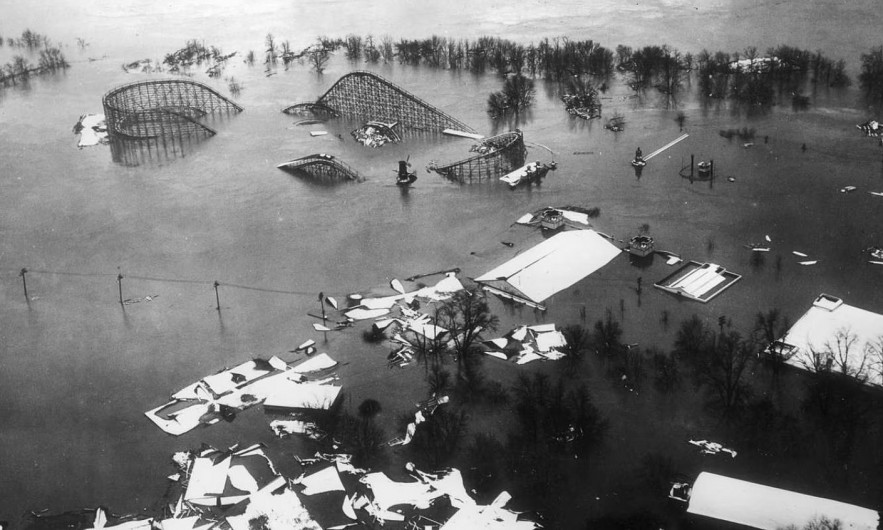 |
| Worst floods in American history |
| Table of Contents |
Overview: Floods in the U.S History
Flash floods, river floods, and coastal floods are different types of flooding. Flash floods, the deadliest type of flooding, are typically caused by prolonged and intense rainfall.
Including tornadoes and hurricanes, floods are the weather-related disaster that results in the most fatalities and property damage in the United States. Bridges, roads, homes, and businesses can sustain damage from floodwaters and debris. It can damage phone, cable, and power lines and contaminate water supplies. More importantly, floods result in the tragic death of loved ones and pets.
Because those regions are susceptible to hurricanes, a large portion of the severe flooding in America has occurred near the Mississippi River, in Texas, along the Gulf Coast, and in Florida.
Floods can fall into one of three categories: flash flooding, river flooding, or coastal flooding.
Flash floods, which are brought on by rainfall intensity and duration, are the most hazardous. The topography also has an impact; if the soil is too wet, it might not be able to absorb rain.
Mudslides can result from flash flooding as well, especially in western states. High volumes of water can be funneled by steep ravines and canyons, intensifying flood damage. A dam breaking, a slow-moving storm, or a surge of water released from an ice jam are additional causes of flash flooding.
Concerns about increased flooding and the effects that flooding from rising sea levels will have on people who live along the American coasts have been sparked by climate change. Extreme weather events can now be linked to rising global temperatures thanks to scientific developments such as better observational data, enhanced climate models, and more sophisticated detection techniques.
♦ Read More: Top 13 Deadliest Events In US History
The top 20 deadliest floods in American history are listed below.
| We used government data from the National Weather Service Weather Forecast Office, the National Oceanic and Atmospheric Administration, the U.S. Geological Survey, and media accounts of flood events to compile a list of the deadliest floods in American history. We made an effort to include all weather-related events that might have contributed to floods in order to fully convey the scope of these tragic historical chapters in the history of our country. |
What Was the Worst Flood in U.S. History - Top 20+
1. Galveston hurricane and storm surge
> Affected area: Galveston, Texas
> Date of event: 1900
> Fatalities: 8,000
> Cost: $602.3 million
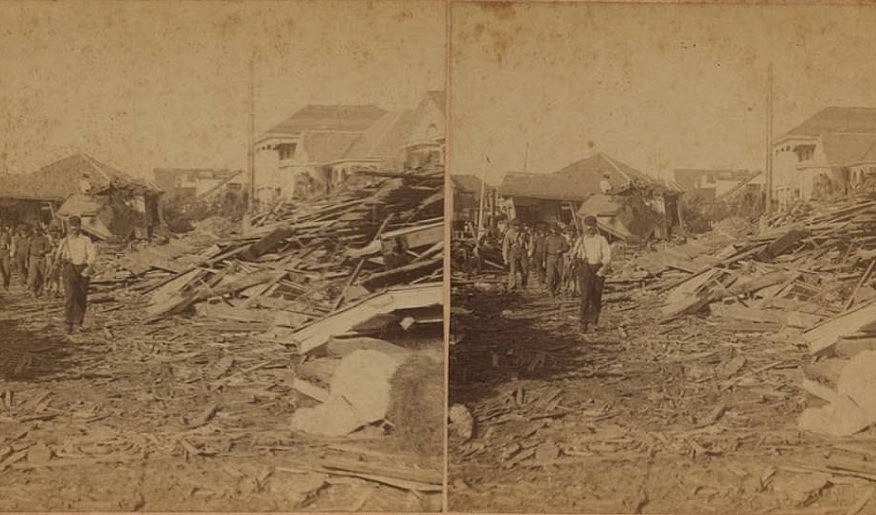 |
| Galveston hurricane - Deadliest flood in US history |
The deadliest natural disaster in American history was the Galveston hurricane in 1900. The category 4 hurricane's strong winds, 15-foot storm surge, and flooding are estimated to have killed 8,000 people. However, the actual number might be closer to 12,000 people.
Despite the storm's strength, many of the fatalities were preventable. The storm was expected to land much further east, according to the Weather Bureau, which later evolved into the National Weather Service. Residents and many tourists disregarded hurricane warnings from Cuba, and the city was largely unprepared for the hurricane that struck it on September 8, 1900. The devastation caused by the hurricane was too much for Galveston, a once-thriving port city, to fully recover from, and investors started to favor Houston instead.
2. South Florida Hurricane and Flood 1928
> Affected area: Lake Okeechobee, Florida
> Date of event: 1928
> Fatalities: 2,500-3,000
> Cost: $1.5 billion
Florida was whipsawed by another storm in late September 1928, barely two years after enduring the effects of a hurricane that devastated Miami. This storm claimed more lives in that state than any other natural weather event.
Nearly half of the 6,000 residents of a farming community on Lake Okeechobee's southern shore would perish in the storm. A 5-foot mud dike built to contain Lake Okeechobee collapsed, unleashing a tidal wave. The bodies of the victims decomposed so quickly due to the heat and the rapid death toll that the survivors were forced to burn the bodies.
African Americans made up more than 600 of the deceased and were interred in unmarked graves in a pauper cemetery in West Palm Beach.
3. Johnstown Flood in 1889
> Year: 1889
> Location: Johnstown, Pennsylvania
> Deaths: 2,209
> Cost: $12.6 billion
 |
| Johnstown Flood |
A dam near Johnstown burst on May 31, 1889, following several days of torrential rain. Even in modern times, it is difficult to comprehend the size and scope of the ensuing flood. 99 complete families were among the up to 2,209 fatalities. As far away as Cincinnati, bodies were discovered.
Flood lines up to 89 feet above river level were delineated, and the wave that hit Johnstown was estimated to be 40 feet high. Industrialists Andrew Carnegie and Henry Clay Frick were among the members of the South Fork Fishing and Hunting Club, which owned the dam but avoided responsibility.
According to historians and legal professionals, the frustration over the failure to assign blame for the tragedy is what spurred the United States to enact stricter liability laws. The American Red Cross got involved in a significant disaster for the first time with this one.
 Top 13 Single Deadliest Days In US History Top 13 Single Deadliest Days In US History |
4. South Carolina Sea Islands hurricane 1893
> Affected area: Sea Islands
> Date of event: 1893
> Fatalities: 2,000+
> Cost: $27.9 million
People did not have today's systems for weather forecasting and warnings in the late 19th century. Because of this, on August 27, 1893, a hurricane completely unprepared South Carolina, in particular the Sea Islands, a barrier along the state's coastline.
More than 2,000 people died when the hurricane swept through the sea islands close to Savannah. Most drowned to death. On the Sea Islands, almost all of the buildings were destroyed, leaving 30,000 people without a place to live.
5. Hurricane Katrina Flooding (New Orleans, Louisiana) in 2025
> Affected area: Southern Louisiana
> Date of event: 2005
> Fatalities: 1,833
> Damages: $161 billion
How people have changed the environment around New Orleans is linked to some of the tragedy of Katrina. When French settlers first arrived in New Orleans 300 years ago, the city was above sea level. However, swamp drainage has caused the city to sink. The poorest residents of the city have typically lived in areas below sea level, which are more susceptible to flooding.
In New Orleans and Mississippi, where Hurricane Katrina made landfall, 50 levees and flood walls collapsed on August 29, 2005. The Army Corps of Engineers came under fire for the poor design and building work. 100,000 homes and businesses were destroyed, and more than 80% of New Orleans was submerged. The failure of these levees caused an estimated 600 fatalities, and the destruction caused by Hurricane Katrina and the levee failure resulted in $161 billion in losses.
6. New England hurricane and flooding 1938
> Affected area: New England, Long Island
> Date of event: 1938
> Fatalities: 700
> Cost: $5.44 billion
On September 21, 1938, one of the most infamous nor'easters in history decimated a large portion of eastern Long Island before wreaking havoc in New England. The NWS reported that the storm was moving at a speed of 47 mph, and it dropped up to 7 inches of rain. Unprotected beaches were overwhelmed by tides at least 50 feet high, which, according to records from Gloucester, Massachusetts, reduced cottages to matchsticks.
At least 700 people died and 2,000 others were injured in the deadliest disaster to ever strike the area. More than 63,000 individuals lost their homes. Nearly 20,000 structures were destroyed, and 100 bridges needed to be rebuilt.
7. Statewide Ohio Flood 1913
> Affected area: Ohio
> Date of event: 1913
> Fatalities: 467
> Cost: $82.4 billion
 |
| Statewide Ohio flood |
Late in March 1913, Ohio experienced its worst weather ever, which resulted in the flooding of 40,000 homes and the deaths of 467 people. The flood was caused by excessive rainfall across the state. 123 people were killed in Dayton when swiftly moving water up to 10 feet deep swept through the city's main streets. On the Miami River downstream, where the water rose to as much as 18 feet deep, 100 more people perished in Hamilton.
In Columbus, where survivors had to be rescued from rooftops and trees, another 100 people perished. The Ohio River rose 21 feet in 24 hours at Cincinnati. After the flood of 1913, the Miami Conservancy District built flood control reservoirs in an effort to prevent a repeat of the disaster.
8. St. Francis Dam Failure 1928
> Affected area: Los Angeles, California
> Date of event: 1928
> Fatalities: 400-600
> Cost: $291.8 million
The St. Francis Dam failure was one of the worst dam failures in American history and the second worst disaster in California history, behind only the San Francisco Earthquake. William Mulholland, a self-taught civil engineer, designed the dam, which was built in 1926. More than 12 billion gallons of water, enough to supply Los Angeles for a year, were stored in the 1,300-foot dam. However, the dam had integrity problems from the start.
The dam keeper noticed muddy leaks coming from the dam early on March 12, 1928. He called Mulholland and his principal assistant, who examined the dam and declared it secure. The dam keeper and his 6-year-old son would become the first drowning victims after the dam gave way twelve hours later. 54 miles would pass before the water wall reached the Pacific Ocean.
9. Labor Day Hurricane 1935
> Affected area: Florida Keys, Florida
> Date of event: 1935
> Fatalities: 500
> Cost: Unknown
Florida experienced a real estate collapse and numerous severe weather events in the 1920s, and the Labor Day Hurricane of 1935 made life in the Sunshine State even more miserable. The Florida Keys were completely destroyed by the category 5 hurricane, which caused a storm surge of up to 20 feet above sea level.
The Keys-to-Mainland railroad was completely destroyed. Veterans from World War I who were constructing a highway and residing in federal rehabilitation camps were among the scores of people who perished. Ernest Hemingway visited the Keys following the hurricane to aid in the recovery efforts. He was inspired by what he witnessed to pen the scathing magazine article "Who Killed the Vets?"
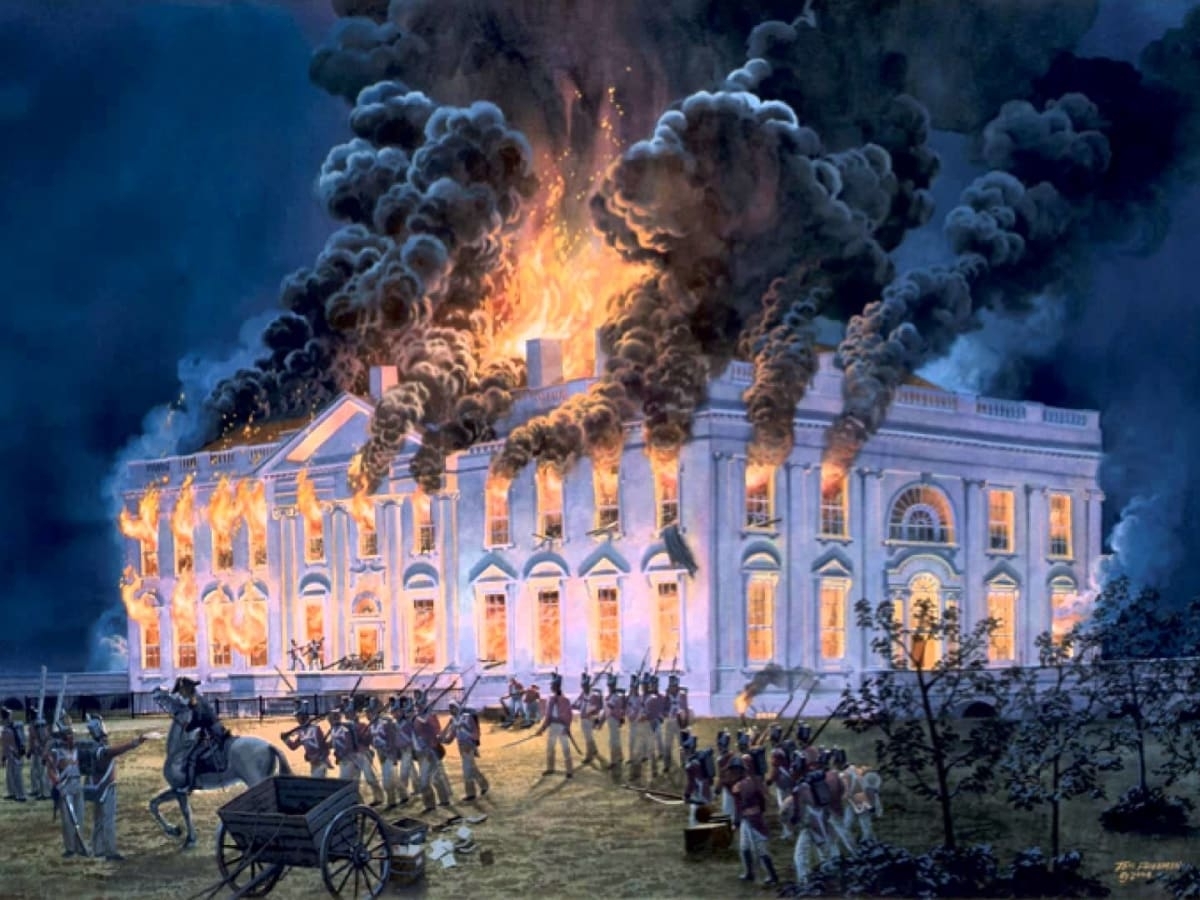 Top 10 Deadliest & Scariest Days In US History Top 10 Deadliest & Scariest Days In US History |
10. The Ohio River Flood 1937
> Affected area: Pennsylvania, Ohio, West Virginia, Kentucky, Indiana, Illinois
> Date of event: 1937
> Fatalities: 385
> Cost: $151.6 billion
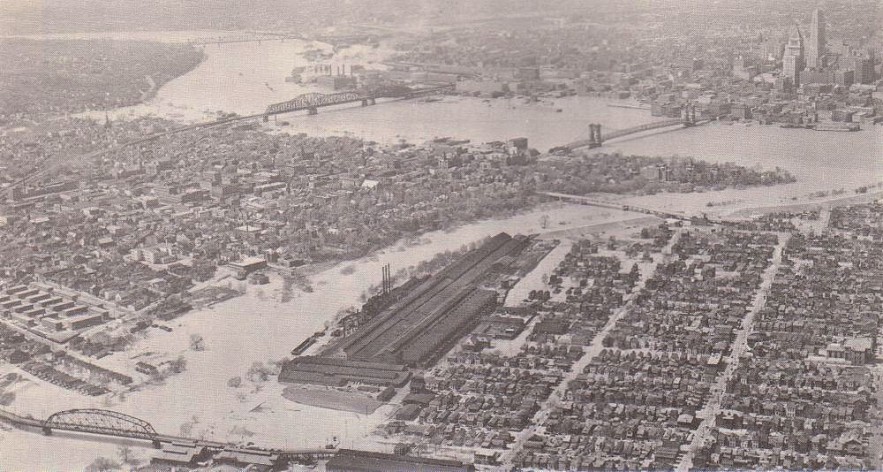 |
| The Ohio River Flood 1937 |
How severe was the 1937 Ohio River Flood? According to the NWS, the downpour "surpassed all previous floods during the 175 years of civilized occupancy of the lower Ohio Valley."
Record rainfall in river cities like Louisville, Kentucky (20 inches), Evansville, Indiana (15 inches), and Cincinnati, Ohio (14 inches) contributed to the flood, which began in late January 1937. According to the NWS, Louisville is 70% underwater. One-fifth of Cincinnati, according to the Cincinnati Enquirer, was submerged.
As the water level rose, gas tanks exploded and oil fires started along the river, making the nightmare even worse.
11. Miami hurricane and flooding in 1926
> Affected area: Florida Atlantic Coast
> Date of event: 1926
> Fatalities: 372
> Cost: $1.49 billion
The collapse of the Florida real estate market in the middle of the 1920s was bad enough, but on September 18, 1926, one of the worst storms ever hit Florida and the Atlantic Coast. The hurricane-prone region experienced deadly storm surge and flooding as a result of the tempest. Boats were strewn across the city as a tidal wave swept over Miami Beach and Biscayne Bay. Up to 6,000 people were injured, and the storm claimed 372 lives.
There had been some early warning of the approaching hurricane from reports from nearby ships, but in 1926, there were few radios in use and few ways to inform the populace of the warning. The amount of property damage was the highest in current US history.
12. Oregon Heppner flash flood
> Affected area: Heppner, Oregon
> Date of event: 1903
> Fatalities: 324
> Cost: Unknown
On June 14, 1903, a brief period of heavy rain and hail in the Blue Mountains sparked a deadly flash flood that swept through Heppner, Oregon, drowning 324 people. Up to 40 feet of water rose and submerged the town.
If residents hadn't been given advance notice that their towns were in the path of those waters, the death toll would have been much higher. Since the local weather station was destroyed in the flood, it is impossible to determine exactly how much rain fell during the catastrophe.
13. Brazos River flood
> Affected area: Freeport, Texas
> Date of event: 1899
> Fatalities: 284
> Cost: $271.0 million
Beginning on June 17, 1899, rain fell on the Brazos River region for 11 nonstop days. In that week, rainfall totals in Texas' 66,000 square miles reached almost 9 inches. A 12,000 square mile area was flooded when the Brazos River overflowed its banks. The town of Richmond would experience a 58-foot rise in flood waters in July. It wouldn't be the last tragedy connected to flooding to affect the area.
14. Hurricane Camille and flooding
> Affected area: East Coast
> Date of event: 1969
> Fatalities: 256
> Cost: $9.70 billion
On August 17, 1969, Hurricane Camille, a category 5 hurricane, hit the Gulf Coast of Mississippi and caused a massive storm surge. The Mississippi town of Pass Christian was flooded by a storm tide that was more than 24 feet high. The highest storm surges ever recorded in the United States at the time occurred along that stretch of the Gulf Coast. Along with the 256 fatalities, 20,000 people were left homeless and thousands of farm and domestic animals perished in the flood.
15. Great Mississippi Flood in 1927
> Year: 1927
> Location: Arkansas, Mississippi, Louisiana
> Deaths: 500
> Damages: $1 billion
 |
| Great Mississippi Flood 1927 |
The Great Mississippi Flood was the worst flood in American history. Over 27,000 square miles were affected, and 500 people died as a result. One of the most destructive floods to ever hit the United States. This was one of the worst and most expensive flooding events in terms of the number of states and regions affected.
Near the end of the summer of 1926, persistent, heavy rain began, and it persisted until the spring of 1927. When combined with wind and the unusually high water levels they caused, the levees were unable to hold back the floodwaters.
The greatest amount of damage was caused when the Mounds Landing Levee collapsed. The Mississippi Delta Region's 1 million acres of land were submerged under water at least 10 feet deep in just 10 days, according to the National Weather Service, which described the severe extent of the damage.
According to the NWS, the flood caused $350 million in property damage, which is equivalent to $5 billion today. This was a significant economic loss because it represented just about one-third of the federal budget.
This incident gave rise to the Flood Control Act of 1928. This law gave the government the power to carry out various initiatives and strategies to control the Mississippi River.
16. Black Hills Flood
> Affected area: Rapid City, South Dakota
> Date of event: 1972
> Fatalities: 238
> Cost: $988.3 million
On June 9, 1972, the Rapid City area of South Dakota experienced intense thunderstorms. The storm system persisted over the region due to strong easterly winds. Rapid Creek swelled to more than 300 times its normal size as a result of the flooding of several creeks that discharged their flood waters into it.
The water level in Rapid Creek above Canyon Lake rose by 12 feet over a two-hour period, according to data from the stream meter collected by the NWS. Water rushed through Rapid City and the eastern foothills of the Black Hills after the Canyon Lake dam broke.
17. Superstorm Sandy
> Affected area: New Jersey, New York
> Date of event: 2012
> Fatalities: 233
> Cost: $88.4 billion
On October 29, 2012, Sandy made landfall in the New York metropolitan area after being downgraded from a hurricane to a superstorm. However, it would end up being one of the most expensive weather events in American history.
Both multi-million dollar homes on the Jersey Shore and subway service in New York City were disrupted. The storm's destructive power and fatalities increased the need for quick preparation of shoreline defenses along the coasts of New Jersey and New York City in order to address the reality that the region will experience stronger storms in the future due to climate change.
18. Texas flood
> Affected area: Parts of Texas
> Date of event: 1921
> Fatalities: 215
> Cost: $70.2 million
The rainstorm that hit Texas in 1921 is regarded as the biggest of its kind in the Lone Star State's history. It brought torrential rain to Texas as it moved northeast and arrived in the area as a hurricane in Mexico. 215 people were killed along its path. Up to 9 feet of water were left in downtown San Antonio after the rain. On September 9–10, the U.S. Weather Bureau station in Taylor recorded nearly 24 inches of rain in 35 hours.
19. Great Northeast Flood
> Affected area: Maryland to Maine
> Date of event: 1936
> Fatalities: 200
> Cost: $85.2 billion
The nearly biblical-scaled, massive flood that inundated half of the eastern United States began on March 11 with snowmelt and continued for 14 days. Over that time, more than 22 inches of rain fell in the tiny town of Pinkham Notch. Rivers overflowed in the New England states. Floodwaters from the Connecticut River rose 19 feet above the Vernon Dam in Vermont.
14,000 people became homeless, and about 200 people lost their lives. Congress passed the Flood Control Act of 1936 in response to the catastrophe, which President Franklin D. Roosevelt later signed. The Army Corps of Engineers was given permission to construct levees, flood walls, and reservoirs by the act.
20. East Coast floods
> Affected area: East Coast states
> Date of event: 1955
> Fatalities: 200
> Cost: $7.78 billion
In August 1955, the East Coast experienced extensive flooding as a result of back-to-back hurricanes. The costliest storm on record at the time was Hurricane Diane, the second of the two storms to hit the area. Northern Virginia experienced the heaviest rainfall, receiving more than 5 inches in just 24 hours. In New England, more than 200 dams failed entirely or partially.
21. Floods in eastern U.S.
> Affected area: Appalachians, Mid-Atlantic, Northeast
> Date of event: 1996
> Fatalities: 187
> Cost: $4.79 billion
Even though blizzards are bad enough, they become even more dangerous when a significant amount of snow melts and causes flooding. Early in 1996, when that confluence overpowered many eastern states, that was the situation. Low-lying areas were inundated by the Susquehanna River after it overflowed its banks. At Williamsport, Pennsylvania, more than 3 inches of rain fell in a 24-hour period. Since Hurricane Agnes 24 years ago, the Keystone State has experienced some of the worst flooding as a result of that rainfall.
22. Brazos River Flood
> Affected area: Freeport, Texas
> Date of event: 1913
> Fatalities: 177
> Cost: $88.7 million
Periodic flooding was common in the Brazos River Basin, which aided cotton farmers in growing their crop. Nevertheless, locals were unprepared for what occurred on December 5, 1913. Water overflowed the riverbank and flooded East Waco as a result of the heavy rain that had started to fall. The raging river claimed the lives of two people and caused property damage to businesses. Further south, the Colorado and Brazos rivers overflowed their banks, and the combined flood eventually claimed the lives of 177 people. The flood prompted action to prevent additional flooding in the city of Waco.
23. Pacific tsunami
> Affected area: Hawaii, Alaska
> Date of event: 1946
> Fatalities: 165
> Cost: $334.1 million
On April 1, 1946, the Aleutian Islands earthquake triggered a tsunami that devastated parts of Alaska and Hawaii. Five people were killed when a lighthouse on Unimak Island in the Aleutian island chain was destroyed by a 100-foot wave, which also destroyed a building 30 feet above sea level. A third of Hilo was destroyed when the wave struck the city as it traveled south toward Hawaii. 25 students and a teacher were killed when a schoolhouse in another area of the island state was destroyed.
Conclusion
You have just discovered more than 20 of the deadliest floods in American history. Unfortunately, today when natural disasters are predictable, floods across the United States continue to cause death and great loss of property.
Humans destroy nature, leading to climate change, making natural disasters worse.
 Top 9 Big Mistakes That Created Modern America Top 9 Big Mistakes That Created Modern America There were some mistakes in the US history that you could not do anything to make up for. Check our major mistakes that changes made ... |
 The Most Unimaginable Excesses of Rich People Living In The Gilded Age (USA) The Most Unimaginable Excesses of Rich People Living In The Gilded Age (USA) The elite of the Gilded Age lived a lavish life with lots of excesses. Check out dining, clothing and traveling excesses of rich people during ... |
 Top 100+ Common Questions and Best Answers about American History Top 100+ Common Questions and Best Answers about American History American history is loaded with odd facts and fascinating tidbits—all of which the average American probably doesn't know. Here they are! |
 Top 11 Greatest Mothers In American History Top 11 Greatest Mothers In American History Every mother is a super woman. With their words, actions, and unconditional love, mothers have a profound influence on their children. Read this article to ... |
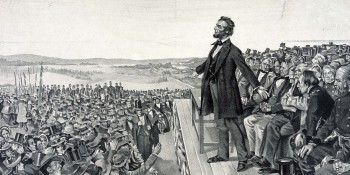 Top 20 Greatest Speeches by US Presidents of All Time Top 20 Greatest Speeches by US Presidents of All Time Presidents are often very good at using the art of language to motivate, caution, reassure, and guide the American people. Let's take a look at ... |
























